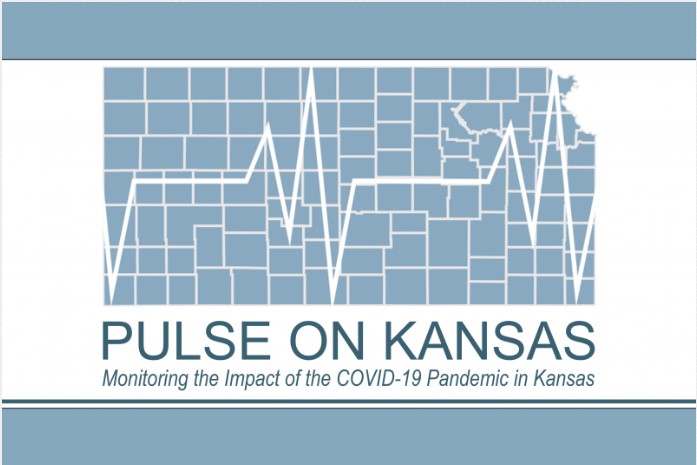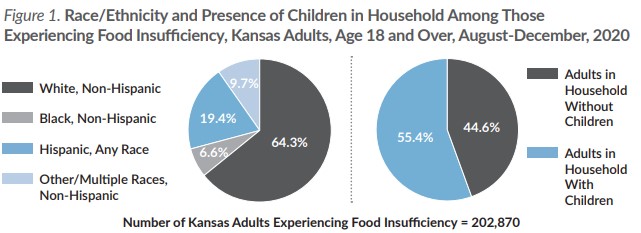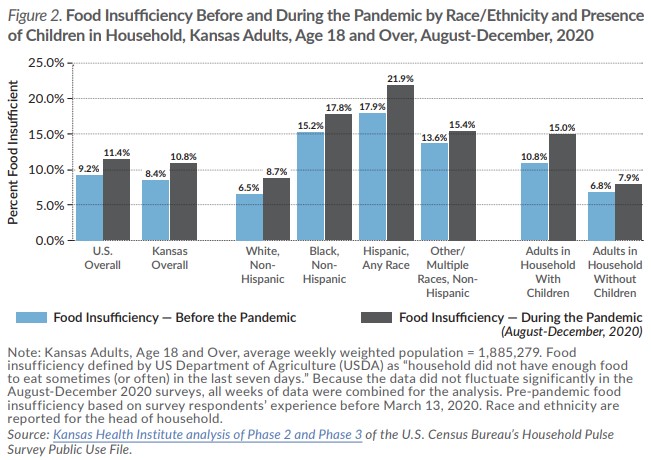Key Points
-
- More than 200,000 Kansas adults — or one in every 10 (10.8 percent) has experienced food insufficiency during the pandemic. The rate of food insufficiency among adults rose during the pandemic both in Kansas (from 8.4 to 10.8 percent) and in the U.S. (from 9.2 to 11.4 percent).
- More than one in every five (21.9 percent) Hispanic, Any Race, Kansas adults, and 17.8 percent of non-Hispanic Black Kansas adults, experienced food insufficiency during the pandemic. These rates are more than two times higher than the rate among non-Hispanic White Kansas adults (8.7 percent).
- Food insufficiency increased during the pandemic among Kansas adults of all races and ethnicities.
- Adults in households with children were almost twice as likely to experience food insufficiency during the pandemic compared to households without children (15.0 percent compared to 7.9 percent), and were about 1.4 times more likely to lack food during the pandemic than in the months before the pandemic (15.0 percent compared to 10.8 percent).


